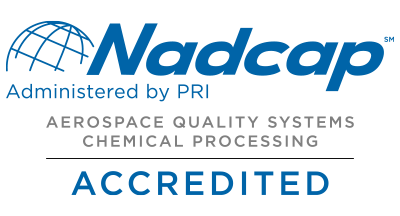Chromating is the chemical conversion of an active metal surface into a protective metallic chromate compound. Chromates connote the use of hexavalent chrome substances which have come under increasing scrutiny for various environmental, health and safety reasons. Global regulations including REACH, RoHS, and WEEE have limited or outright outlawed the use of hexavalent chromium.
Alternative conversion coatings based on trivalent chrome, permanganate, molybdate or vanadate compounds have become prominent hexavalent-chromium free replacements where permissible per specification. The basic specification for chemical film conversion coating for aluminum, namely MIL-DTL-5541, today specifies Type I for traditional hexavalent chromate conversion coatings and Type II for non-hexavalent alternative coatings.
Similarly, the ASTM specification for zinc plating B633 now refers to Type II zinc as having colored chromate conversion coating whereas Type VI refer to zinc with colored passivate, non-hexavalent coating.
To pure chemists, the term chromate implies that the chromium is in the +6 or hexavalent state whereas chromite would refer to the +3 state. To avoid confusion between the 1-letter different chromate and chromite, use of trivalent chrome alternatives have adopted the use of the term passivate.
While most practitioners in the chemical processing industry associate passivate with treating stainless steel, looking at the ASTM definition for the term passivity: the condition of a metal that retards its normal reaction in a specified environment (ref. ASTM B 374), it’s much more general and certainly is applicable to non-hexavalent post-plate conversion coating of zinc and zinc-alloys. I guess us, old school chemical processing geeks, will just have to get used to passivate being something other than treating stainless steel!
--
Chromate passivation history, chromate conversion coating, passivation of metals, chromate passivation timeline, chromate conversion coating evolution, development of passivation techniques, corrosion protection methods, evolution of metal surface treatment, chromate passivation advancements, historical perspective on passivation techniques, Anoplate













